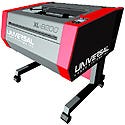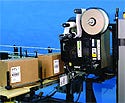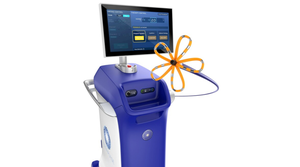Printing, Labeling, and Marking
October 16, 2006
Originally Published MPMN October 2006
SPOTLIGHT
Printing, Labeling, and Marking
Laser engraving and cutting systems
|
A company offers air-cooled CO2 laser engraving and cutting systems for use in making labels for medical equipment and for marking medical devices. Laser systems can cut, engrave, etch, and mark on a variety of materials, from plastics and wood to stainless steel and marble. With standard graphic software, the systems function like a printer from Windows XP. They can make labels, identification tags, bar codes, 2-D matrix codes, and nameplates. The systems can also create pad printing plates, prototypes, 2-D buildups, and 3-D textures.
Universal Laser Systems Inc., Scottsdale, AZ
www.ulsinc.com
Pad printing technology
|
Servo-driven machines and automated systems are suitable for a variety of medical applications where precision and repeatability are required. The Series X5 machines can pick up images from various points on a single cliché plate, print on different areas and at different heights of a single part within the same cycle, and print 360º around cylindrical objects such as catheters and guidewires. The company also offers more traditional pneumatic pad printing systems.
Teca-Print USA Corp., Billerica, MA
www.tecaprint.com
Laser coder
|
Combining 50 W of laser power that can reach 100 W at peak power, a laser system provides coding for fast production lines and harsh environments. The Videojet 3410 prints high-quality graphics, characters, and bar codes on a wide range of packaging materials, including certain rubbers and plastics that are traditionally hard to mark. The unit features a mobile, IP65-rated stainless-steel cabinet that protects the electronics, cooling system, laser, and optical components to provide reliability and ease of installation in tight spaces. An articulated arm adjusts to fit hard-to-reach areas and a compact marking head allows for coding in any orientation.
Videojet Technologies Inc., Wood Dale, IL
www.videojet.com
|
Mini flexographic printer
A flexographic printer is approximately half the size and weight of a traditional printer. It has a footprint of 11.5 ¥ 11.5 in. and weighs 200 lb. The FlexPrint mini is available in widths up to 600 mm, and can print up to 50 cycles per minute. It uses odorless ammonia-free inks, and has a self-contained inking system and a Teflon-coated ink tray for fast ink changeover.
Bell-Mark Corp., Pine Brook, NJ
www.bell-mark.com
Printer-applicator
|
A system facilitates printing, encoding, verifying, and applying pressure-sensitive RFID smart labels to cartons and pallet loads. The Model 5200rfid can also code RFID inlays that meet the latest Electronic Product Code Gen 2 specifications. The unit offers a selection of print engines that use thermal and thermal-transfer technology to produce smart labels with text, bar codes, and graphics at 203 dpi. As labels are printed, digital information is instantly encoded on thin, ultra-high-frequency tags that are embedded in the smart label material. The encoded information is immediately verified by the system, which then applies the smart label to the top or side of a carton or pallet load as it moves by via conveyor. A retrofit kit is available to upgrade existing units into RFID-capable systems.
Weber Marking Systems, Arlington Heights, IL
www.webermarking.com
|
Code-marking machine
Using a molded rubber marking head, a printer can apply a single line of code or other data up to 1 in. long. The Model 28 is suitable is situations where space constraints are tight. It features a double-acting air cylinder, a specially selected spring to rotate the marking head, controlled cycling action, minimal compressed air, and variable speed control in either direction.
Sprinter Marking Inc., Zanesville, OH
www.sprintermarking.com
Copyright ©2006 Medical Product Manufacturing News
You May Also Like







